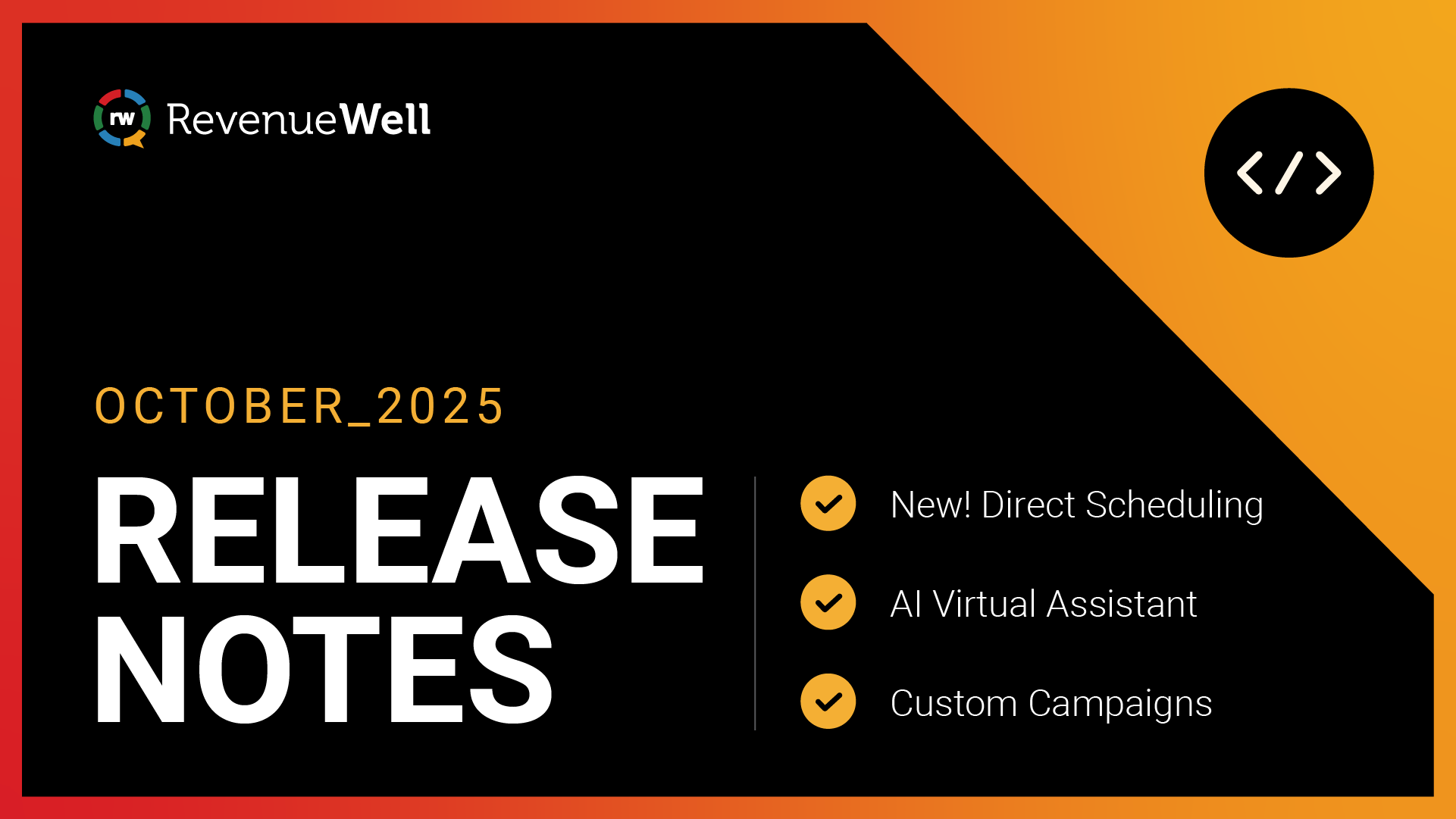How to Run an Effective Dental Reactivation Campaign

Inactive patients can be a hidden goldmine for your practice. Reactivating them not only fills up your schedule but also boosts patient retention. According to the ADA’s December 2023 Economic and Emerging Issues Report, the average dental practice cited that their appointment schedule was 85.4% full, so there’s an opportunity to add more of the right patients to your schedule and ensure that they're getting the appropriate care. And the good news is that a recurring reactivation campaign can help. Let’s walk through the steps to build a successful dental reactivation campaign and bring your patients back for overdue care.
Step 1: Identify Your Patient Base.
The next step is to define the list of patients you want to reactivate. Typically, these are patients who:
- Have missed their last 6-month recall appointment.
- Haven’t been seen in the past 12-18 months.
- Have canceled or no-showed appointments and not rescheduled.
You don’t have to reach every segment because that could be overwhelming, and you run the risk of overcommunicating with patients. Instead, choose one or two segments and do a campaign for each one. Space them out so each one is in a different quarter or time of the year to avoid overlap.
Tip: You can either export a list from your practice management system (PMS) or your patient engagement system. Some patient engagement systems have advanced filtering options that make it easy to pull targeted patient lists. You can search for patients who have past or future appointments within a specified period, patients who have had at least one walked-out appointment in the last (X) months, or patients who haven’t scheduled their next appointment and who haven’t visited in (X) months.
Step 2: Craft Compelling Messaging.
Once you’ve identified your patients, the next step is to create a message that encourages them to book an appointment. Use language that is friendly and reassuring. The goal isn’t to guilt trip them into making an appointment, but to emphasize the importance of routine care.
Key points to highlight:
- Remind them of the importance of regular dental visits for their oral health.
- Offer an incentive, such as a discount, or flexible scheduling options. Be sure to follow ADA guidelines around incentives and discounts.
- Highlight different payment methods, including financing options like CareCredit, if you have inactive patients, who are eligible for it.
- Personalize the message with their name and their last visit information if possible.
Tailor the content to the group you’re targeting. For example, if you’re targeting patients who haven’t scheduled an appointment in the last 12-18 months, you can use a message like this that mentions you haven’t seen them in a while.
Example Message: “Hi [Patient’s Name], we noticed it’s been a while since your last visit. Regular checkups are key to keeping your smile healthy. We’d love to see you back in the office! Book your appointment today and receive [incentive]. Hope to see you soon!”
Tip: Even though reactivation is an evergreen campaign, you can consider tying a theme to it depending on when you send it. For example, if you send a campaign in September or October, you could do a fall themed campaign or if you send one out in January, it can be related to the new year. Experiment to see if an evergreen or a themed campaign gets you better results.
Step 3: Choose Your Communication Channels.
You’ll want to meet your patients where they are, so choosing the right channels for your campaign is key. The best campaigns include around 7 touchpoints through different channels.
Popular channels to use:
- Email: Email is an effective way to reach patients and many still prefer it as their main channel of communication.
- Text: It’s more immediate and attention-grabbing. Use it for short reminders or quick scheduling prompts.
- Direct mail: A physical postcard can make a lasting impression. Use it for patients who may not engage with online communications or in tandem with other communications.
- Phone calls: For more personal outreach, have your front desk staff make calls to high-priority patients who prefer phone calls over texts.
- Paid search: If your budget allows, consider doing a retargeting campaign either on Google or a social media channel where your practice has a presence.
Step 4: Set a Schedule for the Campaign.
Timing is everything. Plan a sequence of communications over a few months to kindly remind patients without overwhelming them, particularly if these same patients receive other communications from you.
Here’s a possible schedule you can use or modify:
Week 1
Reminder
- Communication type: Email
What to include:
- Friendly messaging like “We miss you.”
- Photo of office or staff
- Phone number
- Direct link to your schedule an appointment landing page
Week 2
Reminder
- Communication type: Email
What to Include:
- Discount code or coupon to use at the office
- Phone number
- Direct link to your schedule an appointment landing page
- Clearly marked expiration date for promotion
Week 4
Reminder
- Communication type: Direct mail
What to include:
- Friendly messaging like “Remember how great your teeth felt after your last appointment?!”
- Engaging photos of team smiling alongside patients
- Patient testimonials
- Benefits of going to the dentist regularly
Week 6
Reminder
- Communication type(s): Phone call or text to request feedback pertaining to their last experience with your practice.
What to include:
- Ask why they haven’t returned to your practice. Approach patients in a curious and empathetic way so that you understand their reasoning. It’s possible some of your inactive patients haven’t made an appointment due to a poor experience, fear of pain, cost of care, etc. It’s important to understand where they’re coming from so you can respond in a sincere way.
- If cost is a concern, talk about payment methods, including financing options to help ease the burden.
- Give the option to take an online survey to share feedback.
Week 8
Reminder
- Communication type: Email
What to include:
- Personalized PSA about the importance of cleanings
- Urgency in the final message
- Direct link to your schedule an appointment landing page
Tip: Some patient engagement systems have a reactivation campaign you can use. Instead of building one from scratch, you can use a template to update the content, images, and choose which channels to send your messages, and the frequency.
Step 5: Track Results and Adjust.
No dental reactivation marketing campaign is complete without tracking your results. Here are some metrics you can monitor using your campaign reporting and/or analytics tool:
- Open rates for emails
- Click-through rates for online scheduling links
- Response rates for texts
- QR code scans from direct mail
- Appointments booked and compared against your initial list of inactive patients
If certain messages or channels perform better, you can adjust your campaign accordingly. You may also find that some groups need more communication attempts than others.
Tip: Document the results of your campaign, including what went well, what you learned, and what to do next time. This way you won’t forget the details, and you don’t have to start from scratch. You can simply keep finetuning it.
For patients who have rebooked their appointments through your reactivation campaign, you can send a post-appointment thank you note and a recall reminder for their next visit to maintain the relationships and prevent them going inactive again.
Step 6: Give Your Staff the Heads Up.
Since your front office is the first point of contact for patients, it’s worth letting them know when a new campaign is being planned and when it will launch. Share details like who you’re targeting, how many messages you’ll be sending, what channels you’ll be utilizing, and how they can help with the campaign. This can include answering questions, following up with patients, and helping to build the campaign. You can keep them updated as you build out the campaign so they’re always in the loop and depending on your team size, they can help implement it.
Tip: One way to train teams is by role playing. You and your team can practice handling frequently asked questions and situations, so you’re better prepared to respond to patients.
Most patients only need a little encouragement to get them back into the habit of good dental hygiene and back on your schedule. Try these steps and see what happens! Your schedule could look fuller. Remember, consistency is important for an effective reactivation campaign, but so is taking the time to tailor your messaging and using the right mix of channels to get their attention.
Next recommended read: How to build an expiring dental insurance benefits campaign




